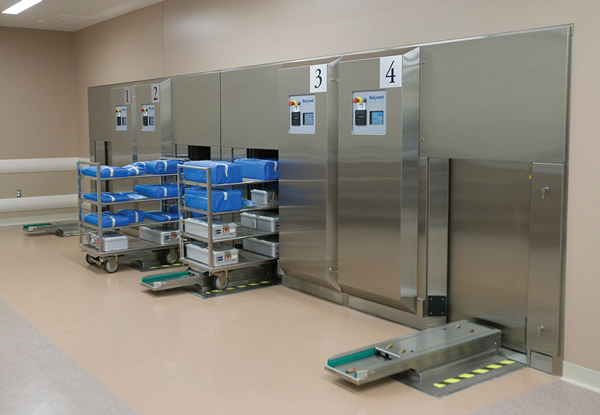 Sterilization & Disinfection
Sterilization & Disinfection
The role of infection prevention when auditing SPD

Infection preventionists (IPs) play a vital role in healthcare, especially in the sterile processing department (SPD), where preventing infection and cross-contamination is paramount. As infection prevention advocates, SPD personnel are responsible for ensuring that surgical instruments and other medical devices are properly sterilized and free of harmful microorganisms before use.…
Effect of COVID-19 precautions on postop SSIs
Editor's Note This study from the Mayo Clinic finds that perioperative COVID-19 precautions did not significantly reduce the risk of surgical site infections (SSIs). The analysis included 29,904 patients who had colorectal, hysterectomy, hip, and knee prosthesis procedures at the Mayo Clinic’s multicenter institution between January 1, 2018 and December…
SHEA: New SSI guidance recommends antibiotics be discontinued after incision is closed
Editor's Note This update to the 2014 "Strategies to Prevent Surgical Site Infections in Acute Care Hospitals" recommends that antibiotics be discontinued after a patient’s incision has been closed in the OR, even if drains are present. The expert panel members writing the update add that continuing antibiotics after closure…
Leapfrog: HAIs increased during COVID-19 pandemic
Editor's Note The Leapfrog Group, on May 3, announced that its new Hospital Safety Grade shows a significant increase in healthcare-associated infections (HAIs) during the COVID-19 pandemic, spiking to a 5-year high and remaining high. Their analysis found that the average: Central line-associated bloodstream infection (CLABSI) ratio increased 60% Methicillin-resistant…
Effectiveness of alcohol flush, drying cycles of AERs
Editor's Note This study, led by researchers at the University of Pittsburgh School of Medicine, finds that air flush cycles used in automated endoscope reprocessors (AERs) may not adequately dry endoscope channels, particularly narrow air/water channels. Endoscopes were reprocessed per protocol with a 3-minute or 10-minute air flush following reprocessing.…
A day in the life in SPD

Ambulatory surgery centers (ASCs) are continuing to perform more and more surgical procedures. According to Fortune Business Insights, ASCs can expect to see even greater case volumes as the number of outpatient procedures is estimated to increase by 15% by 2028. With an increase in procedures, it is essential that…
EPA proposes new standards to lower EtO emissions by 80%
Editor's Note The Environmental Protection Agency, on April 11, proposed new regulations to reduce exposure to ethylene oxide (EtO), which include more stringent air emission standards and protections for workers who are exposed to EtO when sterilizing medical devices. The proposed standards are estimated to cut EtO emissions from commercial…
Incidence of HAIs in hospitalized patients with, without COVID-19
Editor's Note This study from HCA Healthcare, Nashville, Tennessee, finds an increase in healthcare-associated infections (HAIs) in patients with COVID-19, but no increase in patients without COVID-19. More than 5 million hospitalizations in 182 hospitals between 2020 and 2022 were included in the analysis. The incidence of HAIs per 100,…
SSI trends in community hospitals
Editor's Note In this study, researchers from the Duke Infection Control Outreach Network Surveillance Team, Duke University School of Medicine, Durham, North Carolina, find that surgical site infection (SSI) rates did not decrease in community hospitals from 2013 to 2018. SSI data was collected from patients having 26 common surgical…
Incidence of SSIs after povidone-iodine vs normal saline intraoperative wound irrigation
Editor's Note This Japanese study finds that surgical site infections (SSIs) were lower after intraoperative wound irrigation with normal saline than with povidone-iodine. A total of 941 patients having gastroenterological surgery were randomized to intraoperative wound irrigation for 1 minute before skin closure with 40 mL of aqueous povidone-iodine (study…

 Free Daily News
Free Daily News